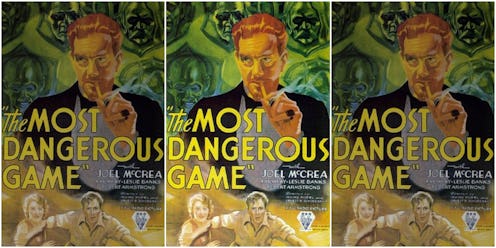
Why is it that some totally perfect words have negative connotations? I blame middle school. Take, for instance, "weird," a totally necessary adjective that would've fallen out of favor if it weren't for Shakespeare using it in Macbeth. (Here's some Bard trivia: the Three Witches in the play are alternatively known as the Weird Sisters.) Non sequiturs aside, "weird" is a word (originally meaning "connected with fate or destiny") that's pretty much perfect for describing everything from the weather to a funky mood. But, ... weirdly enough, often we hear that word and think of its secondary definition: "strange" or "abnormal." All of which is to say that when I think back on the creepy books teachers made us read in school, I'm not thinking of creepy in the negative sense.
Straight up. Sometimes creepy can be really, really good. Actually, creepy can be exactly what you crave.
I'll let you discover etymological tale on your own (though how fascinating is it that creep means to "move slow with the abdomen close the ground"?). After all, what's undeniably true about creepy books is that they give you pause. They make you rethink and reconsider the world around you. Maybe they broach uncomfortable subjects in disarming prose. And yet, no matter how disturbed you might've been, something about these nine books you probably had to read in school probably stuck with you — in a good way.
1. Alice's Adventures In Wonderland by Lewis Carroll
Even the toned-down Disney adaptation of this story (first published in 1865) is unnerving — a good barometer for the source material's inherent freakiness. I'm not sure if it's the weird playing-card-people, the Mad Hatter (whose name derives from a syndrome suffered by milliners who routinely came in contact with a toxic mercury mixture that created felt out of fur), the biographical details of Carroll, or the utterly nonsensical prose.
2. Fever 1793 by Laurie Halse Anderson
Today, Zika might be a serious concern, but in 1793 the city of Philadelphia was plagued by an outbreak of yellow fever that took more than 4000 lives. Anderson's book vivifies the environmental terror of the era.
3. The Giving Tree by Shel Silverstein
This is a genuinely sweet — to the point of cloying, if you believe some readers — story, so how can it also be creepy? I suspect the straightforward treatment of death is part of the matter. Oh yeah: also the way in which nature will use itself up for the relentlessly selfish human race. When we have to confront that hard truth in fiction, it's pretty messed up.
4. The Most Dangerous Game by Richard Connell
Part of what can contribute to the creepiness of a book — or a movie, for that matter — is its author's commitment to building suspense and creating an atmosphere of unflappable calm. Juxtapose those elements with something as horrifying as, oh, say, humans hunting other humans for sport, and you've got this title.
5. The Yellow Wallpaper by Charlotte Perkins Gilman
"— there is something strange about the house — I can feel it," writes Gilman in her classic short story, which may be the paragon of domestic creepiness. In terse and fixated paragraphs (I think their brevity contributes to the unhinged mood), Gilman depicts a woman stuck with a hysteria diagnosis--and the frightening world (I mean to room) in which she is confined: "There is a funny mark on this wall, down low, near the mopboard. A streak that runs round the room ... a long, straight, even smooch, as if it had been rubbed over and over." I mean, seriously: "there are so many of those creeping women, and they all creep so fast?" Even if you can put this story in its proper cultural context, I challenge you to avoid getting goosebumps.
6. Heart Of Darkness by Joseph Conrad
Admittedly I can't not hear Marlon Brando breathe "the horror, the horror."
7. The Jungle by Upton Sinclair
You were a happy, go-lucky carnivore before you read this expose of the meatpacking world at the turn of the 20th century. After you finished Sinclair's slim novel, dinner was never the same.
8. A Clockwork Orange by Anthony Burgess
Here's a creepy novel that I read in school — and can't help returning to again and again. What creeps me out changes ever time. Is it Alex and his droog's bad behavior? The bizarro world — and language — Burgess creates? The horrid reformation to which our protagonist is subjected? The whole novel is unsettling and... well, perfect.
Images: Pexels